Combat ships. Cruisers. A charming misunderstanding
Outright awkward
Not a cruiser. Not a destroyer leader. Don't understand what. Nevertheless, built by a decent series and fought from the heart - that's what the Atlanta-class cruiser is.
But let's start, as always, from the starting point. That is, not from the Washington agreement we mentioned earlier and the London agreement that followed it. So let those who developed and signed these documents be indignant there themselves, while we will talk about more serious things.
Restricting and tying themselves hand and foot, countries that wanted to have powerful fleets began to look for ways to circumvent the imposed restrictions almost immediately after signing. Nobody wanted to hurt themselves.
However, with what was drawn in London for a new class of light cruisers (8 tonnes of displacement and the main caliber of guns no more than 000 mm), you won't want to, but start experimenting.
In the USA, they began to work in two directions at once - a normal, but compact, universal light cruiser and a cruiser - the leader of destroyers.
Is it a destroyer leader?
It is the leader of the destroyers. Many called the Atlanta "air defense cruisers", but excuse me, which air defense ships in 1936? What are we talking about? These ships were designed specifically as destroyer leaders with all the attributes of this subclass.
Even conceptually: in fact, a destroyer, but the same as on steroids. Enlarged almost twice. The usual leader of the destroyers built by France and Italy exceeded the displacement of conventional destroyers by a maximum of 1–000 tons. Here the alignment was different, and in fact it was a full-fledged "London" cruiser, but with a very peculiar weaponry.
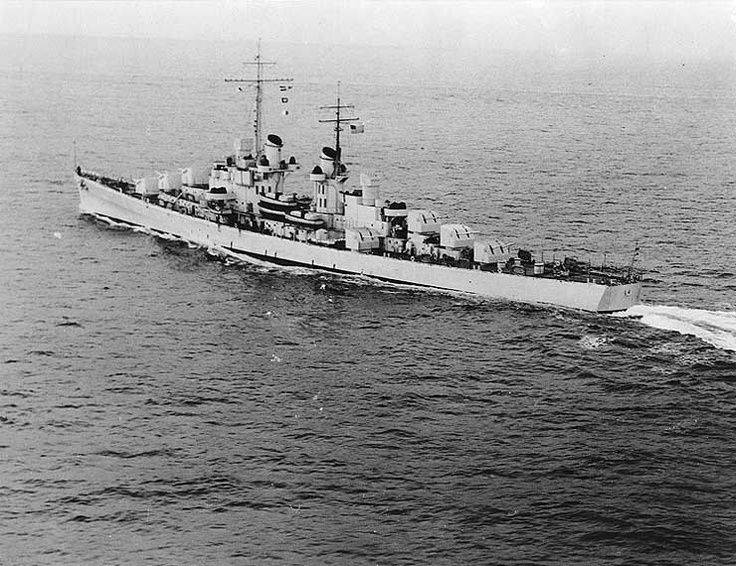
This ship was supposed to go along with the destroyers, at a speed of about 40 knots. And defend your ships from enemy destroyers. And also (again) to shoot enemy aircraft at medium distances.
And in 1936 it was decided to create cruisers of the Atlanta type. Precisely as the leading cruisers, with a displacement of 6-8 thousand tons and a speed of 40 knots.
For comparison: the same age (1934) destroyer of the "Farragut" class had a total displacement of 2 tons and went at a speed of 100 knots. So it’s not a leader, but a cruiser, this Atlanta.
weaponry
It was interesting with weapons. At first, they wanted to make a combined set of four 152-mm main caliber guns in two towers on the bow and stern. And place 127-mm universal mounts in the middle of the ship.
But in 1937 it was decided not to install 152 mm guns. And make all the weapons uniform. That is, 127 mm.
Controversial decision. But the American shipbuilders realized that even 8 tonnes of displacement (and actually it was planned to be less) could not meet all the requirements for this ship. And you have to sacrifice something.
All signatory countries donated. So the Americans in this case decided to sacrifice the main caliber. By the way, no one else did this.
They tried to implement the project with mixed weapons on Omaha-class cruisers. But even with a larger displacement than the Atlanta, nothing decent came of it.
And as a result, a cruiser with a displacement of 6 tons and with the main caliber from the destroyer came out.
However, 11 ships were built. And almost all of them took part in the naval battles of World War II.
What were these ships?
Reservation
Reservation was carried out according to the standard American scheme: vertical and horizontal protection. Vertical protection - armor belt 95 mm thick with 95 mm traverses. The belt covered the engine rooms and other mechanisms. Under the water was another armor belt, 95 mm thick at the top and up to 28 mm below, adjacent to the first. This belt covered the artillery cellars in the bow and stern.
The horizontal armor consisted of a 32 mm thick armor deck.
The turrets had an armor thickness of 25–32 mm. The conning tower on the ships was 62,5 mm thick.
In general, it is almost a cruiser. The mass of the armor was 8,9% of the displacement, which corresponded to the reservation level of American cruisers.
Power plant
Each cruiser was equipped with a two-shaft power plant, which consisted of two Westinghouse turbo-gear units and four oil-fired steam boilers.
Power plant capacity 75 liters. from. Maximum speed 000 knots. And the greatest cruising range is 32,5 miles at a speed of 8 knots and a fuel reserve of 500 tons of oil.
Crew
The peacetime staff was 623 people. According to the wartime staff - 820 people.
weaponry
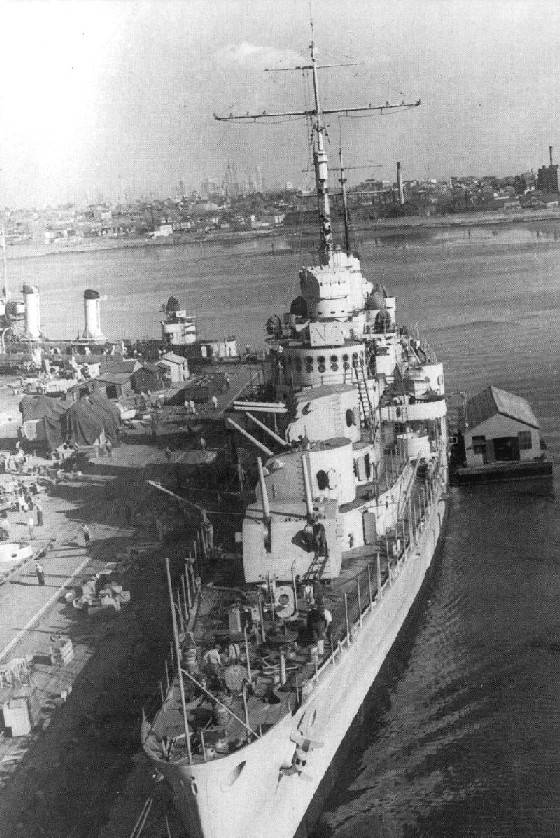
The armament in accordance with the project was the same as that of the American destroyers: universal 127-mm guns, anti-aircraft guns and torpedo tubes.
Artillery armament consisted of sixteen 127-mm universal guns, located in eight two-gun turret mounts. Three towers were placed in a linearly elevated position on the bow and in the stern, two more - in the middle part along the sides of the ship.
This set looked very frightening. And in theory - woe to that destroyer, which would have turned up under the guns. They would have perforated it in full, but ...
The “but” was that these installations (how to put it mildly) did not have the proper level of impact on the enemy ships. Moreover, it was impossible to single out what exactly was badly invented or done. Here, rather, everything should have been assessed comprehensively.
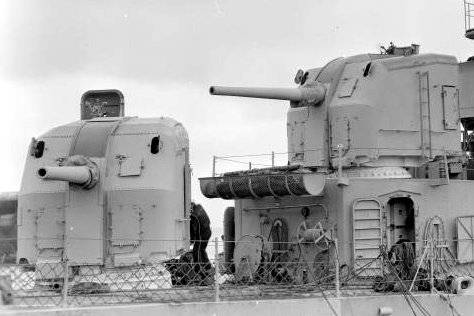
In general, the 127 mm guns were frankly weak. The problem was the ammunition, which did not have the required power. Ballistics, range and accuracy suffered. The fact that, with automatic supply of ammunition, the guns, according to the plan, were supposed to have a rate of fire of 15 rounds per minute, and some unique destroyers on the destroyers, when it got hot, easily gave 20-21, did not save. Statistics say that in order to knock out one plane, the gun had to fire about a thousand shots.
It turned out that the rapid-fire guns were very "so-so" in terms of accuracy and range. Alas, this was not their only drawback. Of course, the 127-mm projectile was inferior in performance to its 152-mm counterpart, but who knows how much! It is believed that the American 152-mm projectile was twice as good as its 127-mm counterpart in penetration and effect.
And third. Seven towers and 14 barrels - it looks very cool, but only on paper. In fact, it was very difficult to bring them to one target for maximum damage. These seven towers could fire at one target, but in a very limited sector, just under 60 degrees, and even going sideways to the enemy. Not the best position.
The shooting was controlled by the two newest at that time directors Mk37, which were put into service exactly in 1939. This was enough to fire at two targets. But for a larger number, alas.
In general, the versatile Atlanta caliber was really more suitable for shooting at air targets. But, as already mentioned, the cruisers were not created at all for this.
"Chicago Piano"
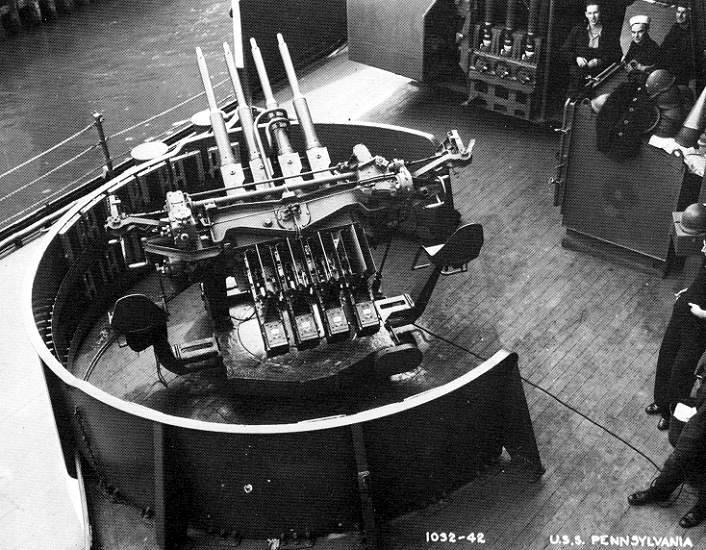
And now about what really had to work on airplanes. Initially, anti-aircraft armament was supposed to consist of 3-4 quad mounts with a caliber of 28 mm. The so-called "Chicago piano". But this installation was so heavy, cumbersome, unwieldy and unreliable that, as far as possible, they began to change them to twin 40-mm Bofors, which were produced under license in the United States.
Coaxial or quadruple Browning 12,7-mm machine guns were assumed as melee air defense systems. But instead of them, at the construction stage, they began to install single-barreled 20-mm anti-aircraft guns from "Erlikon".
In general, the anti-aircraft weapons of the cruisers, which were built in three series, differed from each other. If the armament of the first series consisted of 4x4x28 mm and 8x1x20 mm, then the cruisers of the third series were armed in this regard much richer: 6x4x40 mm + 4x2x40 mm + 8x2x20 mm.
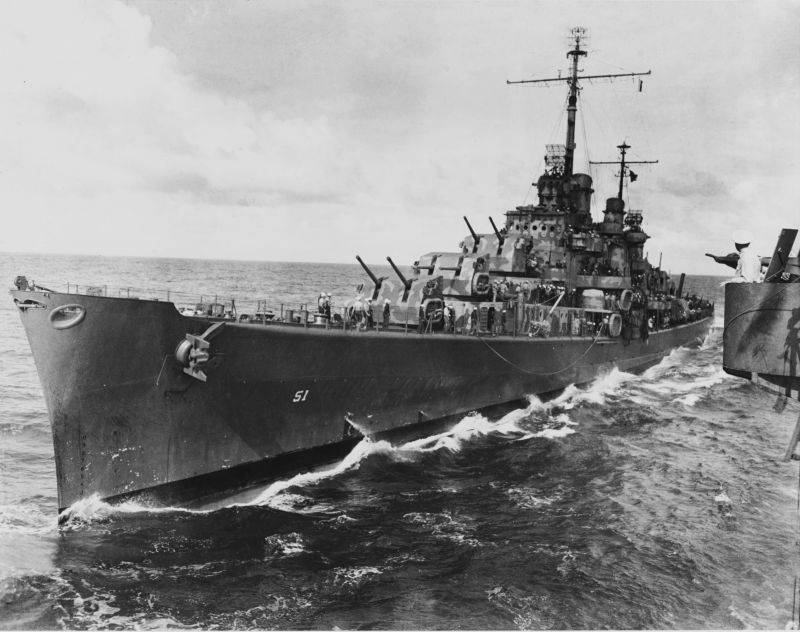
Here, using the Atlanta as an example, it can be seen that towers 1 and 3 are installed for firing at air targets. And tower number 2 - on the surface.
Mine torpedo armament
Since the cruisers were supposed to operate together with the destroyers, why not launch torpedoes with them? Two four-tube torpedo tubes 533 mm on the sides. In general, given the fact that American designers did not spoil their cruisers (more precisely, they did not litter the decks) with torpedo tubes, it is precisely here that the idea can be traced that the Atlanta-class cruisers were considered by them to be more close to destroyers than to full-fledged cruisers.
As for the name "air defense cruiser", perhaps only ships of the third series, which entered service after the war, could claim this. Well, by the way, navy the US command began to classify these ships as Cruiser Light Anti-Aircraft, that is, an air defense cruiser only from March 1949.
Something special
If you evaluate the project, then there are mixed feelings. It is clear that the 30s after Washington and London are time of hesitation. But here, perhaps, the Americans have surpassed everyone, having built [/ b] something [/ b]. Is it really "Atlanta"?
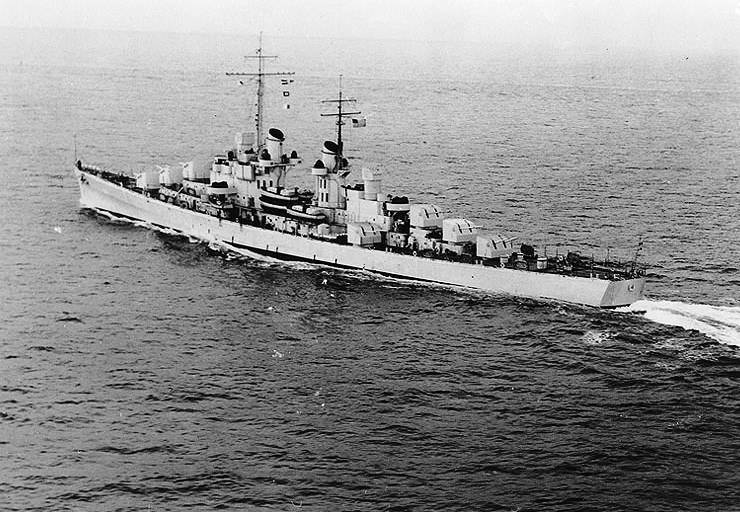
This is not a destroyer leader / counter-destroyer. French Jaguars had a displacement of about 3 tons. Italian leaders - up to 000 tons. And here twice as many: displacement, weapons, people.
Cruiser? No. For a cruiser, armament and booking are frankly weak.
An air defense cruiser? Also no. The air defense ship clearly lacked fire control systems.
Plus, the declared speed of 40 knots turned out to be either a military cunning of a disinformation nature, or something else. But 32 knots is what these ships were rich in. For full interaction with destroyers (and the same "Farragut" issued 4 more nodes), this was clearly not enough.
And so it happened. Since something incomprehensible happened, then the military service at the ships was about in the same spirit.
Atlanta
In fact, the ship's combat service began in 1942. Then the ship became part of the TF16 task force, which was based on the aircraft carriers "Enterprise" and "Hornet".
It was as part of this formation that the cruiser took part in the Battle of Midway. Lavrov "Atlanta" then did not get. Since (according to the disposition) the cruiser was away from the main events. But the task was accomplished by the compound.
Further, the crew of the cruiser conducted exercises. Among other things, shooting in squares was practiced.
On July 29, 1942, Atlanta was transferred to Task Force TF61. And from August 7, she participated in the cover of both the landing in the Eastern Solomon Islands, and personally - the aircraft carrier "Enterprise".
On August 24, Atlanta entered the battle with enemy aircraft attacking the aircraft carrier. According to the report of the captain, 5 aircraft were shot down.
Further, the cruiser was transferred to the TF66 operational unit. He performed combat missions at Guadalcanal.
On November 12, 1942, the cruiser successfully repelled attacks from Japanese aircraft, shooting down two of them. Then there was the night phase of the battle. It deserves a separate description and discussion. We will only briefly dwell on the actions of Atlanta.
Unidentified floating object
The crew of the cruiser, after detecting the enemy with the help of the radar, was the first to visually come into contact with the destroyer "Akatsuki", illuminating it with searchlights and literally disfiguring it from a distance of over a mile. The Akatsuki is out of order. And, as the prisoners later showed, until the end of the battle, he did not commit any hostilities.
Further, the cruiser grappled with two destroyers, "Inazuma" and "Ikazuchi". He began firing at them with all 127-mm guns. But what happened next, we will consider in another article in more detail.
There was a detective story... An "unidentified light cruiser" took part in it. He opened artillery fire on the Atlanta.
Then a torpedo hit the cruiser. To the area of the bow boiler room. From which the ship loses its speed and power supply. Cease fire from guns. And forced to switch to backup steering).
And the cherry on the cake was the identified heavy cruiser San Francisco. He slammed into Atlanta about two dozen 203-mm shells. One third of the crew and Rear Admiral Scott were killed.
The story is dark, I repeat. We will analyze it.
But in fact, "Atlanta" by joint efforts ditched their own. The crew (more precisely, its remnants) under the command of the excellent Captain Jenkins began to fight for survivability.
Fortunately, the minesweeper "Bobolink" approached and tried to tow the battered cruiser. During the towing, Japanese aircraft paid a visit. The heroic members of the Atlanta crew fought them off with the two remaining 127-mm guns and a pair of Oerlikons.
All this led to the fact that Jenkins ordered to leave the ship. And the Atlanta sank three miles from Cape Lunga.
Honestly earned five stars. And thanks to the president for his courage and unbending fighting spirit. The Atlanta crew was clearly very good.
Juneau
The fate of this cruiser was even shorter.
Juno took part in the rescue of the crew of the aircraft carrier Wasp, sunk by a Japanese submarine on September 15, 1942. Then he was assigned to task force TF17, in which he participated in the raid on the Shortlands Islands and in the battle off the Santa Cruz Islands. In early November 1942, as part of the TG62.4 formation, he covered the passage of convoys from Noumea to Guadalcanal.
In the night battle (in which the Atlanta was smashed) on November 12, 1942, he received a torpedo hit on the left side in the area of the bow boiler room. With a large roll at low speed, he tried to leave the battlefield. But north of Guadalcanal received another torpedo in the area of the bow cellars from the Japanese submarine I-26.
The ammunition detonated. And the cruiser sank within 20 seconds.
Only 10 people were saved.
San Diego
First took part in battles during the battle for the Solomon Islands. Participated in a raid on the Shortland Islands. In the battle of the Santa Cruz Islands. In the summer of 1943, he supported the landing in New Georgia.
He participated in the landing operation on the Gilbert Islands, the raid on Kwajallein, strikes against Japanese bases in the Marshall Islands and Truk, and the landing on Enewetok Atoll.
In 1944 he takes part in raids on Markus and Wake. Covers the landing at Saipan. And also in the battle in the Philippine Sea. And in the landings on Guam and Tinian. Also in strikes against Palau and Formosa.
16 battle stars.
"San Juan"
The cruiser joined Task Force TF18 in June 1942 in San Diego. Accompanying a convoy of troops to the Solomon Islands to land on Tulagi.
Participated in the battle at Santa Cruz. It was damaged by a bomb. It pierced through the stern. But it didn't explode.
Participated in the raid on Kwajallein, in the attacks on Palau, Yapa, Ulithi, and the landing in Hollandia. In the summer of 1944, he was in battle in the Philippine Sea. In December 1944 - in operations in the South China Sea, at Formosa, in attacks on the Philippines. In March 1945 - in strikes against Iwo Jima and Okinawa.
13 battle stars.
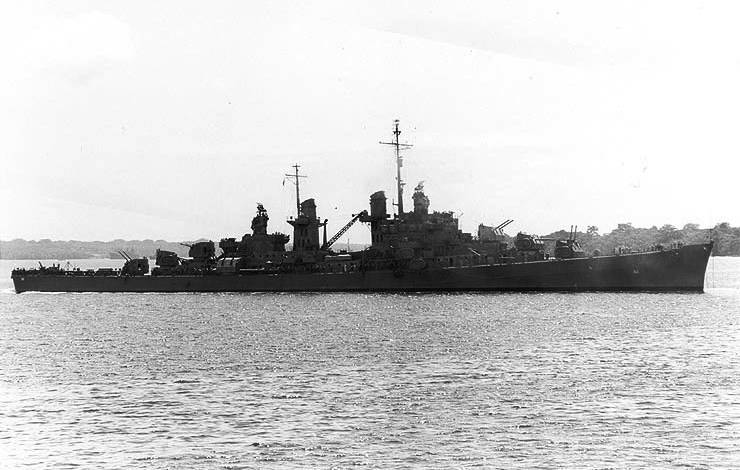
Oakland, Renault, Tucson and Flint
The cruisers of the second series "Oakland", "Renault", "Tucson" and "Flint" entered service in 1944. And they did not take part in the war as actively as the ships of the first series. However, the successfully completed operations were also on the account of these ships.
Results
Summing up all that has been said, it is worth saying that the ships, in principle, with a proper understanding of their tasks and capabilities, were suitable for use. Another thing is that for them there really was no well-thought-out niche, which is why they did not get effective use.
A cruiser that has an armoring and firepower issue is not a cruiser. A destroyer leader who is unable to catch up with his charges is not a leader. And, frankly, the American "Fletchers" and "Girings" were excellent and powerful destroyers that did not need nannies.
Only the third, post-war series "Atlanta" could be considered as air defense ships, because they already had 6 directors of management instead of two.
On the whole, Atlanta is a familiar product of compromises. Spawned by the Washington documents.
- Roman Skomorokhov
Combat ships. Such strange three musketeers and Chevalier Xu
Combat ships. Cruisers. Paradox-style cardboard compromise
Combat ships. Cruisers. Shot damn thing that didn't come out lumpy
Combat ships. Cruisers. A family of perfect pirates
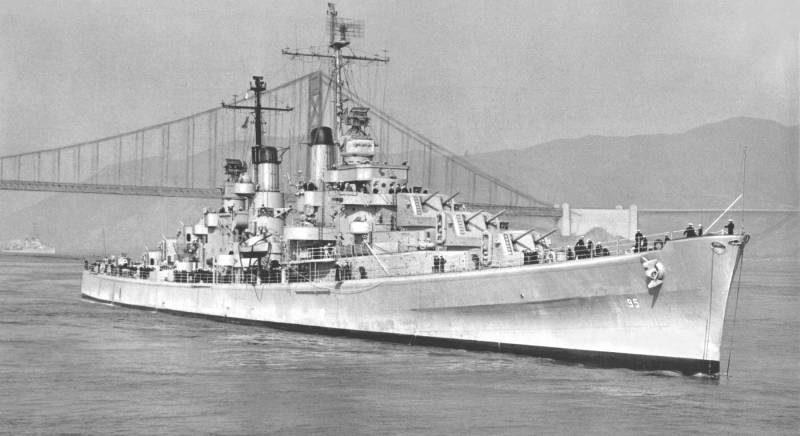
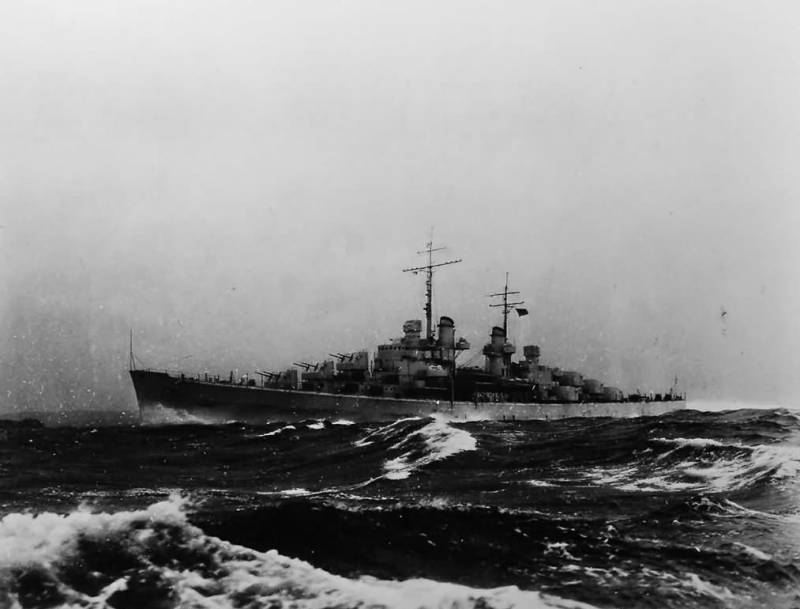
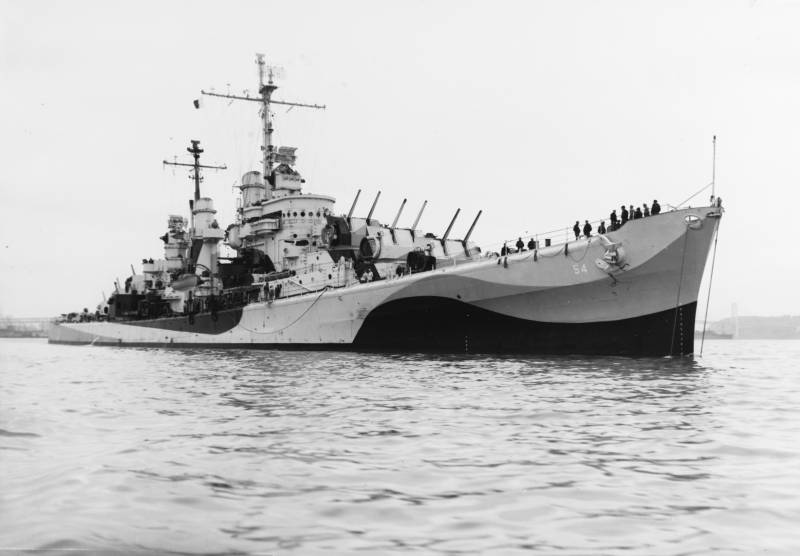
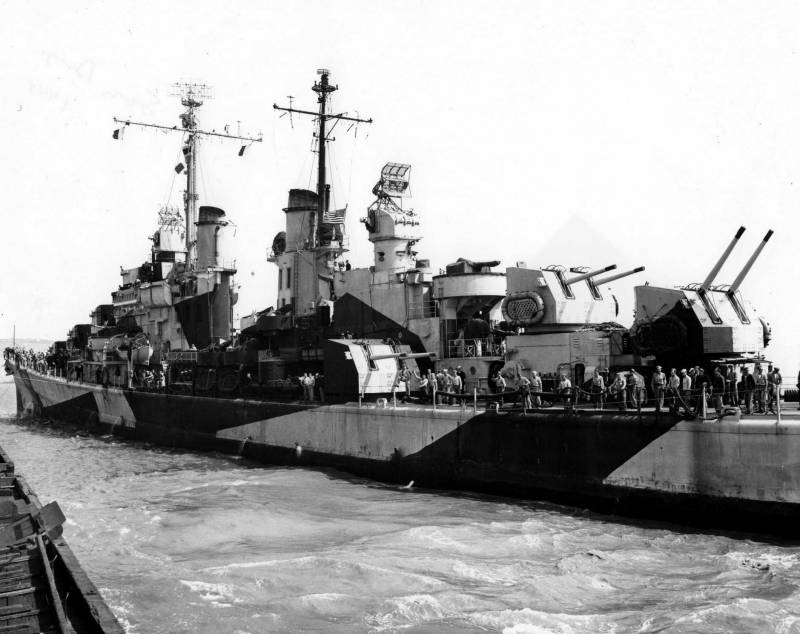
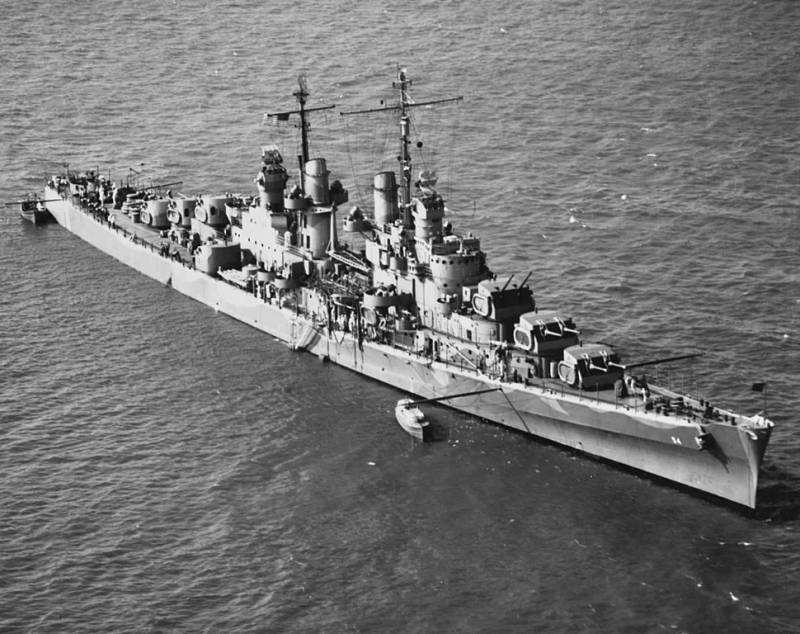

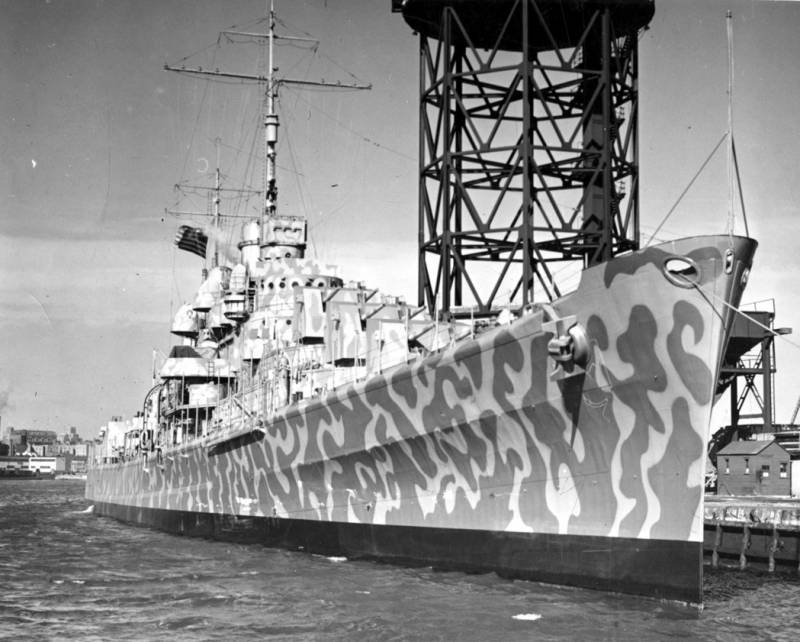
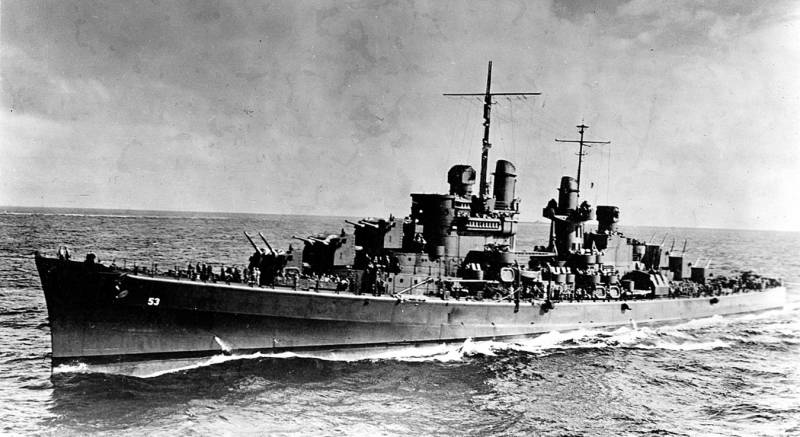
Information